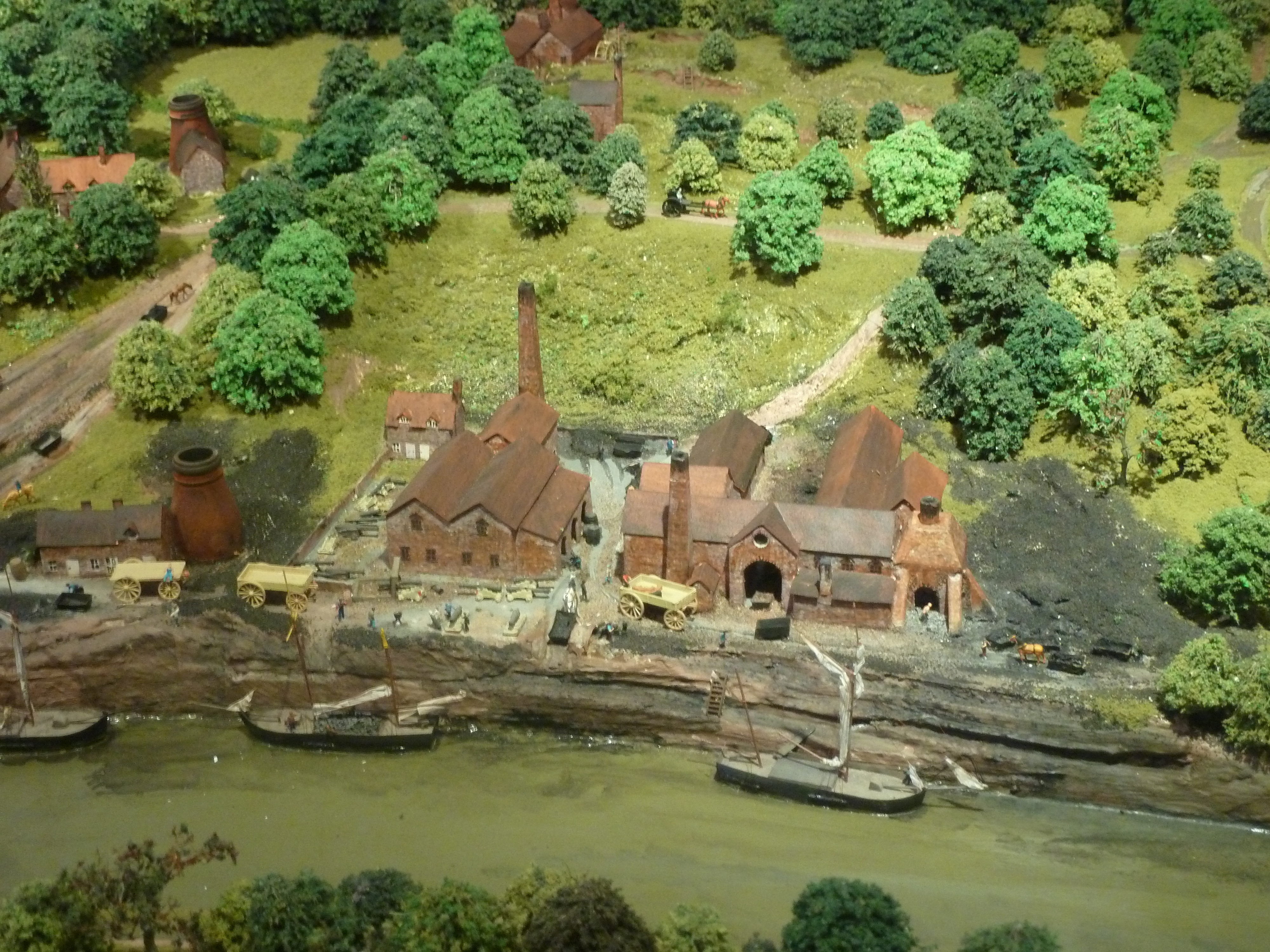Calcutts Ironworks on:
[Wikipedia]
[Google]
[Amazon]
 Calcutts Ironworks was an
Calcutts Ironworks was an
Heritage Gateway. Retrieved 23 March 2018.A P Baggs, G C Baugh, D C Cox, Jessie McFall and P A Stamper, 'Broseley', in ''A History of the County of Shropshire: Volume 10, Munslow Hundred (Part), the Liberty and Borough of Wenlock'', ed. C R J Currie (London, 1998), pp. 257-293.
British History Online. Retrieved 23 March 2018. Brodie died in 1811, and his nephew, also Alexander Brodie, took over. By 1815 the works had fallen into disrepair. About 1817 the works was leased by William Hazledine, and he produced iron unprofitably for a few years. The last furnace was closed in 1828. He gave up the lease in 1831; the foundry was demolished in 1836.
 Calcutts Ironworks was an
Calcutts Ironworks was an ironworks
An ironworks or iron works is an industrial plant where iron is smelted and where heavy iron and steel products are made. The term is both singular and plural, i.e. the singular of ''ironworks'' is ''ironworks''.
Ironworks succeeded bloomeri ...
in Jackfield, in Shropshire, England. It was established in 1767, and production ceased in 1828. The works became an important producer of cannon.
Location
The site was on the River Severn, inIronbridge Gorge
The Ironbridge Gorge is a deep gorge, containing the River Severn in Shropshire, England. It was first formed by a glacial overflow from the long drained away Lake Lapworth, at the end of the last ice age. The deep exposure of the rocks cut t ...
about east of Ironbridge. The location is ().
History
In 1767 George Matthews leased the site from Sir Onesiphorus Paul, and he built two furnaces, the bellows being operated by water wheels; the site producedpig iron
Pig iron, also known as crude iron, is an intermediate product of the iron industry in the production of steel which is obtained by smelting iron ore in a blast furnace. Pig iron has a high carbon content, typically 3.8–4.7%, along with silic ...
. In 1778 Matthews was one of a partnership.
By 1786, when the operators were Baille, Pocock and Co., the site had two blast furnaces, which could each produce 40 tons of iron a week, air furnaces, two bar iron forges and three steam engines. The site manufactured cannon.
In that year the lease was bought by Alexander Brodie, a Scottish blacksmith from London. He closed the forge; in the foundry he produced mainly a ship's stove (his patent design) and cannon. By 1796 he was making 32-pounder cannon, and by about 1804 there were four furnaces. It was one of only three sites in the country with a steam-powered boring mill; cannons were bored eleven at a time. They were shipped to Bristol, for naval use. This was the period of the Napoleonic Wars; the site was visited by William V, Prince of Orange
William V (Willem Batavus; 8 March 1748 – 9 April 1806) was a prince of Orange and the last stadtholder of the Dutch Republic. He went into exile to London in 1795. He was furthermore ruler of the Principality of Orange-Nassau until his death in ...
during a tour of Shropshire.The Calcutts IronworksHeritage Gateway. Retrieved 23 March 2018.A P Baggs, G C Baugh, D C Cox, Jessie McFall and P A Stamper, 'Broseley', in ''A History of the County of Shropshire: Volume 10, Munslow Hundred (Part), the Liberty and Borough of Wenlock'', ed. C R J Currie (London, 1998), pp. 257-293.
British History Online. Retrieved 23 March 2018. Brodie died in 1811, and his nephew, also Alexander Brodie, took over. By 1815 the works had fallen into disrepair. About 1817 the works was leased by William Hazledine, and he produced iron unprofitably for a few years. The last furnace was closed in 1828. He gave up the lease in 1831; the foundry was demolished in 1836.
See also
*Museum of the Gorge, Ironbridge
The Museum of the Gorge, originally the Severn Warehouse, is one of the ten museums of the Ironbridge Gorge Museum Trust. It portrays the history of the Ironbridge Gorge and the surrounding area of Coalbrookdale, Shropshire, England.
History
...
* Naval artillery in the Age of Sail
References
{{reflist Ironworks and steelworks in England Ironbridge Gorge Cannon History of Shropshire